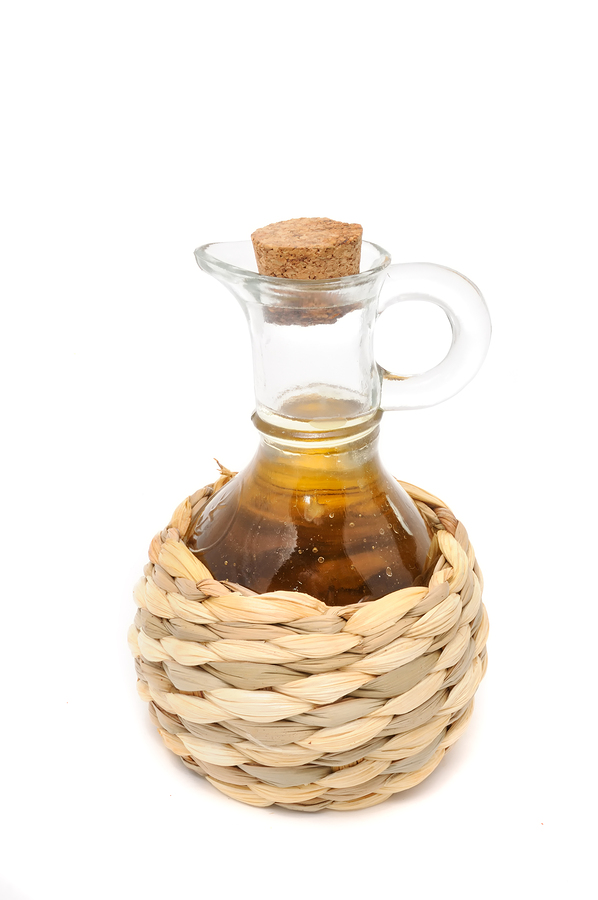By David Blyweiss, M.D., Advanced Natural Wellness
February 10, 2017
- Health benefits of apple cider vinegar are overstated
- One health issue where this pungent vinegar really works
- The best way to take your apple cider vinegar
In “Natural Remedies” issue of Advanced Natural Wellness, one of my recommendations was to take a tablespoon of vinegar to find out if your heartburn is caused by too much stomach acid, or too little. (If the pain disappears, it means you’re not producing enough hydrochloric acid.)
This is a great test. But as one of my readers pointed out, it comes with an unusual problem. You’re stuck with a full bottle of apple cider vinegar that you have no idea what to do with!
Now, if you do an internet search, you’ll see all sorts of crazy claims about vinegar. I’m here to let you know that most of them probably aren’t true. As far as I’m aware, there are no human studies showing it lowers cholesterol, cuts your risk of heart disease, protects against cancer or staves off arthritis.
It’s also not a good idea to try and use it to whiten your teeth… or gargle with it to cure a sore throat. It’s highly acidic. This means if you try using vinegar for either of these purposes, you could end up damaging your tooth enamel or burning the tissue of your mouth and throat.
MD Exposes the Hidden Danger to Your Eyes

When your eyesight starts to fail, it's a real problem. Suddenly you can't go to the grocery store... you can't get to the doctor if you have an emergency... you can't meet your friends for dinner…
Your "regular" doctor doesn't have time to keep up with the latest research. And the same goes for eye doctors. They go to school to learn how to fit you for glasses and contacts, but have no way of preventing the damage and loss of eyesight that threatens your freedom and independence.
Let me show you something that explains a LOT about how your eyes work.
In my FREE Special Report, I'll show you a HUGE, untapped resource for your eyes that safely and naturally restores clear, effortless eyesight.
Click here to get started...
On the other hand, there are a few areas where apple cider vinegar may come in handy.
Here’s Where Apple Cider Vinegar Works Best
If you’re trying to lose weight, a little apple cider vinegar each day may be able to help. The weight loss effects are attributed to a main component of vinegar. It’s called acetic acid, and it appears to suppress the accumulation of body fat.
Drinking a half ounce a day for 12 weeks can help reduce your body mass index, waist circumference and the amount of belly fat you carry. It also helps keep triglyceride levels in check.
But the real power behind apple cider vinegar comes with its ability to lower blood sugar and improve insulin sensitivity.
In people who are insulin resistant, two tablespoons of vinegar with meals can improve insulin sensitivity after a high carb meal by about 34%. Additionally, it cuts after-meal blood sugar spikes by as much as two thirds.
Regular consumption of vinegar can also help reduce hemoglobin A1c (HgbA1c) values in patients with type 2 diabetes. (The higher your HgbA1c number, the higher your average blood sugar levels are.)
The World's Quickest Solution for Ending Prostate and Urinary Misery
This has recently been revealed to be one of the only real breakthroughs in prostate health.
The seeds of a strange fruit (sometimes called "Chinese Apples") hold powerful phytonutrients that are a revolution in prostate health.
In fact, UCLA and Veterans Administration research have now proved this to be true.
Not only that, but it may be the worlds quickest solution for ending prostate misery.
Simply stated, these phytonutrients represent a huge step beyond beta sitosterol, saw palmetto, and other phytosterols alone.
Simply click HERE if you want to have fast prostate relief...restful, uninterrupted sleep...no more constant "urges to go"...enhanced virility...and optimal prostate support for life.
It appears to work by slowing down the breakdown of starches. So when you take some just before a carbohydrate rich meal, less sugar will get absorbed into your bloodstream.
The Best Way to Get More Apple Cider Vinegar
Now, you might be tempted to quickly slam down a shot of undiluted apple cider vinegar all at once to get the pungent torture over with as soon as possible.
Don’t do that!
As I mentioned previously, vinegar is highly acidic. This means it will eat through your tooth enamel. Potentially, it could even damage your esophagus.
So you always want to dilute it, first. I suggest mixing one to two tablespoons with about 8 ounces of water and using a straw to drink it with….add 1-2 teaspoonsful of honey if unsweetened is not to your taste. Always use organic brand of apple cider vinegar that hasn’t been filtered and pasteurized.
However, there are many other ways to get more apple cider vinegar in your diet. Personally, I like to mix it with olive oil, garlic and a few herbs. Then, I just drizzle it over my food.
It not only works as a salad dressing, it also adds a nice flavor when you use it on your vegetables, fish and meat. (Once you experiment with it a little, you’ll find your food tastes bland without it.)
In the meantime, keep in mind that taking a little apple cider vinegar doesn’t mean you can eat off-limit foods and expect a miracle. It’s still up to you to eat a healthy diet and get regular physical activity to maintain healthy blood sugar levels… whether you’re diabetic or not.
SOURCES:
Kondo T, et al. Vinegar intake reduces body weight, body fat mass, and serum triglyceride levels in obese Japanese subjects. Biosci Biotechnol Biochem. 2009 Aug;73(8):1837-43.
Johnston CS, et al. Vinegar improves insulin sensitivity to a high-carbohydrate meal in subjects with insulin resistance or type 2 diabetes. Diabetes Care. 2004 Jan;27(1):281-2.
Mitrou P, et al. Vinegar Consumption Increases Insulin-Stimulated Glucose Uptake by the Forearm Muscle in Humans with Type 2 Diabetes. J Diabetes Res. 2015; 2015: 175204.
Mitrou P, et al. The role of acetic acid on glucose uptake and blood flow rates in the skeletal muscle in humans with impaired glucose tolerance. Eur J Clin Nutr. 2015 Jun;69(6):734-9.






